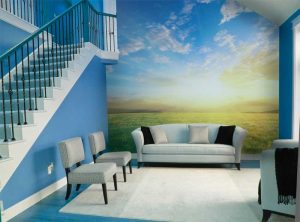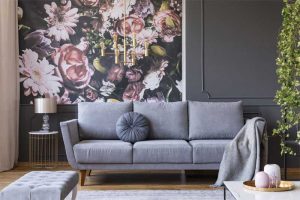
It is also important to consider the choice of material—the larger the print, the heavier it becomes, so the adhesive needs to be strong enough to hold everything in place.
If the printer has a say in the choice of the graphics to be installed, a basic emulsion paint is always preferable as it has no washable properties. However, if a washable or wipeable paint has been used, there are ways to overcome any potential clash with the adhesive.
Ideally, these paint types need sanding down to remove the ‘washable’ surface. That said, smoothing generates dust—and lots of it—but this is the preferred work-around for this type of paint. If sanding is not a viable option, a good quality sealer or primer could be applied to lock in the washable properties of the paint. It goes without saying whatever the solution, all finishes need to be clean; a seemingly obvious fact that can often be overlooked.
Before commencing the graphics application, regardless of the paint type, installers must make sure the substrate has had sufficient time to bond properly to the wall surface. They must keep in mind any removable adhesive may still cause damage to the paint if the bond is greater than that of the paint to the wall surface, such as plasterboard.
Arranging a site visit in advance can eliminate additional costs and delays. The end-user may not always grant this request, but most will understand that a day’s disruption beforehand is better than several extra days on-site to correct any faults later.
Production considerations
When it comes to producing the graphics, there are a few things printers must consider. While it seems obvious, it is important to check there is enough ink to run the complete job before proceeding. If the liquid runs out during the printing process, there is a high possibility of colour variation.
It is also important to consider the choice of material—the larger the print, the heavier it becomes, so the adhesive needs to be strong enough to hold everything in place.
To commence printing, one must make sure the material is at the right temperature and spin each panel 180 degrees; this will ensure each join prints on the same section across the width of the roll, and the colour will stay constant on the overlaps.
Once the print is complete, sufficient time should be allowed for out-gassing (72 hours minimum) before processing any lamination, cutting, or application tasks.

When installing the final product, it is important to plan the positioning of overlaps in advance, as these will be crucial to the result and the ultimate impact of the graphics.
Choosing the right media
Printers and signmakers can easily fall into the trap of approaching a wall graphics commission with a ‘one-size-fits-all’ approach when it comes to the choice of media. But, with numerous considerations, including internal versus external application, wall type, graphics size, adhesive strength, and removability, choosing the right media will ultimately determine the success and lifespan of the graphics.
Many manufacturers recommend specific media products that offer excellent performance if the guidelines are followed. For example, a specialized 80-micron polymeric polyvinyl chloride (PVC) film with a high coat weight/strength adhesive is an ideal option for both internal and external applications and is available in matte and gloss finishes. The media makes for an excellent solution for permanent wall graphics and has a very low minimum application temperature of -20 C (-4 F). For external application, one must always check if the media can be applied to brickwork or similar materials, along with the minimum temperature requirements.
Today, a variety of finishes and thicknesses are available along with a unique range of adhesives that allow wall graphics to be easily changed if the image starts to look dated, or if it is no longer suitable.
If a print is being over-laminated, it is important to ensure the chosen laminate conforms to the material it is applied to. One must take the time to research options and, if in doubt, seek the manufacturer’s advice for compatibility as shrinkage, peeling, and disfiguring need to be avoided.





